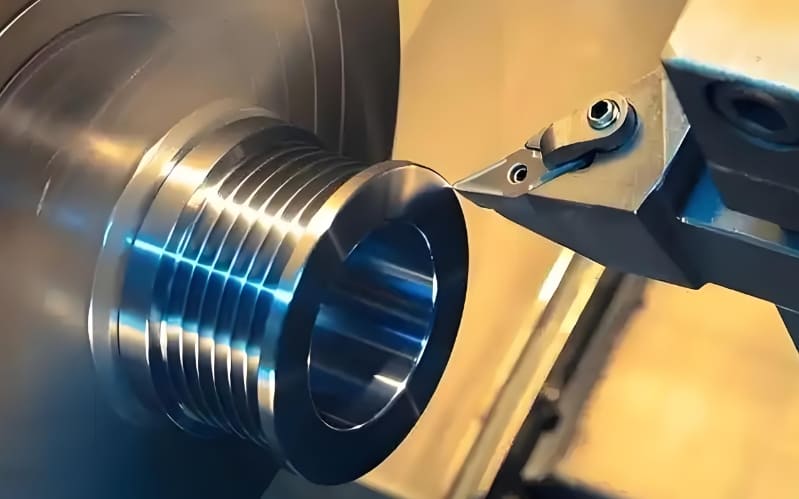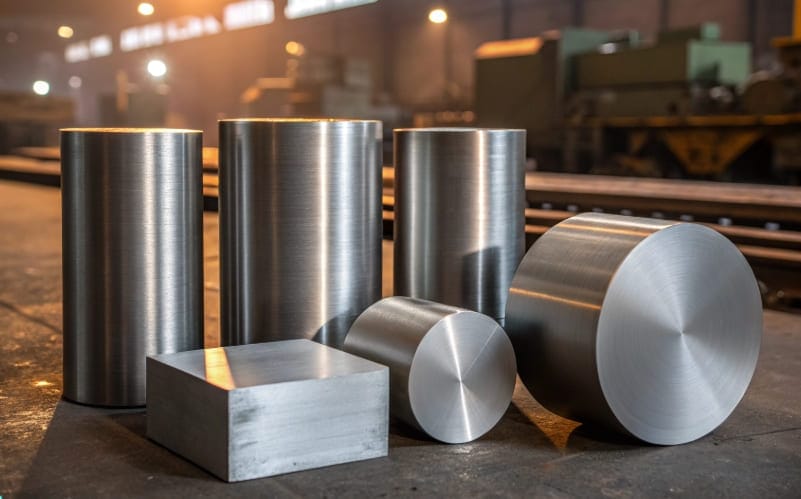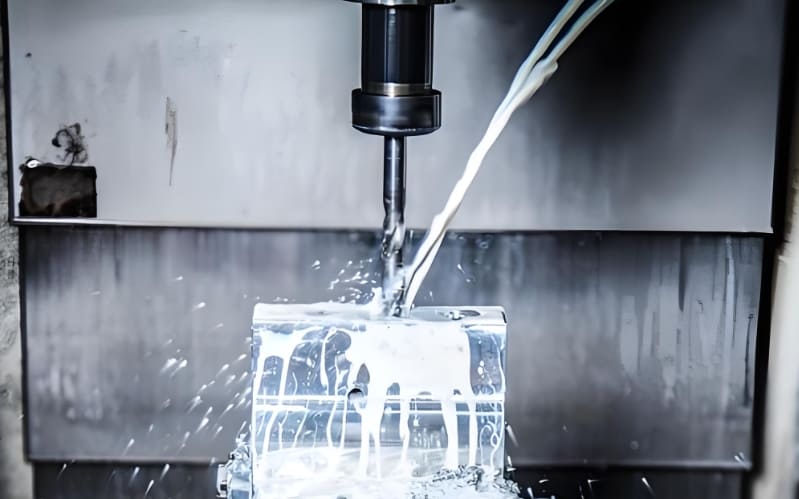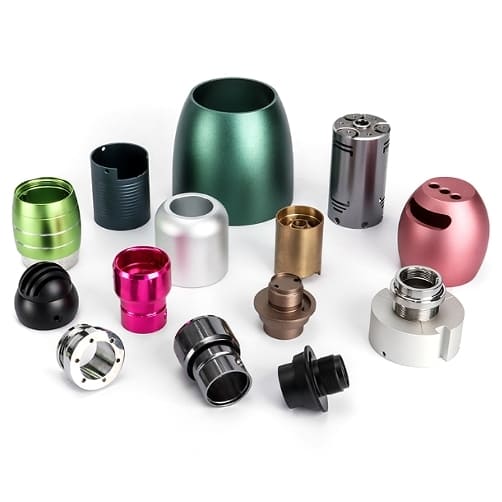Manganese steel, with its high hardness and toughness, presents unique challenges during machining. Many manufacturers struggle to find the right tools that can handle this material’s abrasive nature. The wrong tool can lead to rapid wear and tear, increased downtime, and costly repairs.
Manganese steel is best machined with high-speed steel (HSS) or carbide tools, particularly those with a wear-resistant coating. These tools can withstand the heat and wear generated when cutting through this tough material.

Finding the right tool is crucial to ensuring precision and minimizing tool wear. Let’s explore the most suitable options for machining manganese steel.
What is manganese steel?
Manganese steel, also known as Hadfield steel, is a high-alloy steel containing around 12-14% manganese and 0.8-1.25% carbon. This combination gives it exceptional hardness and durability.
Manganese steel is a high-carbon steel alloy known for its toughness and resistance to abrasion. It is commonly used in heavy-duty applications where strength and wear resistance are essential.

Understanding its properties is crucial for choosing the right machining methods and tools to work with this material.
Composition and Microstructure of Manganese Steel
Manganese steel’s composition directly influences its mechanical properties and machinability. The carbon content is responsible for forming hard carbides that give the steel its hardness, while the high manganese content enhances its hardenability and resistance to impact.
Manganese: Improves hardenability, increases toughness, and enhances resistance to impact.
Carbon: Forms hard carbides, contributing to the material’s wear resistance and hardness.
Microstructure: The combination of carbon and manganese enables the steel to undergo a work-hardening effect when subjected to mechanical stresses.
This microstructure provides advantages in high-stress environments, making it an ideal choice for demanding applications. However, it also complicates machining, as the material hardens during cutting, necessitating specialized methods.
Work-Hardening Behavior
The ability of manganese steel to work-harden is one of its most notable characteristics. As it is subjected to mechanical work, such as cutting or impacting, it becomes progressively harder and tougher.
Impact of Work-Hardening: This leads to rapid tool wear and necessitates the use of cutting tools that can handle increased hardness during the machining process.
Challenges: The steel’s increasing hardness during cutting can cause premature tool failure and reduce the efficiency of machining operations.
What are the properties of manganese steel?
Manganese steel is valued for its unique combination of properties, which make it ideal for demanding applications.
The key properties of manganese steel include high tensile strength, excellent wear resistance, high impact strength, and toughness. It also has good work-hardening properties, meaning it becomes harder under impact or friction.
These properties make manganese steel a preferred material in industries requiring high-performance, durable components.
High Impact and Tensile Strength
Manganese steel is resistant to fracture, able to absorb significant impacts without breaking. This makes it ideal for applications where materials are subjected to high forces or shocks. Its high tensile strength allows it to withstand heavy-duty stresses without deformation.
Applications: Components such as crushers, railway tracks, and mining equipment that experience frequent high-impact forces benefit from manganese steel’s impact and tensile strength.
Resistance to Wear and Abrasion
Thanks to its high hardness and manganese content, this steel is highly resistant to wear and abrasion. It maintains its integrity even in abrasive environments, making it ideal for components that experience significant friction.
Work-Hardening Effect
As discussed earlier, one of the steel’s most crucial features is its ability to work-harden. This ability makes it exceptionally durable in service, but it complicates the machining process.
Benefit: The work-hardening effect increases the steel’s durability in use.
Challenge: It complicates machining by causing the material to become progressively harder during the cutting process.
What is manganese steel used for?
Given its toughness, wear resistance, and impact strength, manganese steel is used in a wide range of applications, especially in industries where components must withstand heavy wear and impact.
Manganese steel is commonly used in the manufacture of railway track components, crushers, dredger parts, and heavy machinery components. Its wear-resistant properties make it essential for equipment exposed to high levels of impact and abrasion.

The steel’s ability to withstand the rigors of harsh environments makes it indispensable in heavy-duty industries.
Railway Components
Manganese steel’s wear resistance makes it ideal for manufacturing railway track components, such as rails and switches. It can endure the continuous abrasion caused by heavy train traffic without significant wear.
Longevity: Manganese steel components in railway systems have longer lifespans due to their resistance to wear and deformation.
Mining and Crushing Equipment
The steel’s resistance to wear and its high impact strength make it an ideal material for mining equipment, including crushers, grinders, and conveyor belts. These components are exposed to harsh conditions and heavy loads, and manganese steel provides the toughness needed for these environments.
Mining Tools: Manganese steel is used in crusher liners, grinding media, and dredger parts, which experience frequent impact and abrasion.
Dredging Machinery
Dredgers, used for underwater sediment excavation, benefit from manganese steel’s ability to resist abrasion and corrosion, ensuring longevity even in harsh underwater conditions.
Corrosion Resistance: The material’s ability to withstand seawater corrosion ensures that dredging machinery operates efficiently for long periods.
What are the key considerations for selecting machining tools for manganese steel?
When selecting tools for machining manganese steel, several factors need to be considered to optimize performance and minimize tool wear.
Key considerations for selecting machining tools for manganese steel include the tool’s hardness, thermal resistance, and the type of coating used. These factors ensure that the tool can handle the material’s properties without premature wear or failure.
It’s important to tailor machining parameters according to the specific tool material and steel grade.
Tool Hardness and Coating
The cutting tool’s hardness must exceed that of the workpiece to ensure effective machining. Coatings such as TiN (Titanium Nitride) and TiAlN (Titanium Aluminum Nitride) improve hardness and heat resistance, which helps to reduce friction and increase tool longevity.
Coating Benefits: These coatings prevent material buildup on the tool’s edge, reduce friction, and enhance heat resistance, thus improving the tool’s overall performance.
What are the best types of cutting tools for manganese steel?
Selecting the right cutting tool is essential when machining manganese steel. Tools with high hardness, wear resistance, and heat resistance are key factors in achieving efficient and cost-effective machining.
The best cutting tools for manganese steel are carbide-tipped tools or those made from cobalt alloys. These materials can withstand the abrasive nature of manganese steel and maintain sharpness longer than HSS.

Using specialized coatings further enhances tool performance and longevity.
Carbide Tools
Carbide is a highly durable material ideal for machining manganese steel. Its high hardness and wear resistance allow carbide tools to retain their sharp edges for longer periods, making them effective in high-abrasion and high-heat environments.
Example: Carbide-tipped inserts and drills are often used for machining manganese steel components in mining and construction industries.
Cobalt Alloys
Cobalt alloys, such as cobalt-chromium, are known for their ability to maintain strength and resist wear at elevated temperatures. This makes them another excellent choice for machining manganese steel.
Application: Tools made from cobalt alloys can be coated with advanced wear-resistant materials to further improve performance.
How can tool coatings improve machining efficiency for manganese steel?
Tool coatings play a significant role in enhancing tool life and machining performance by providing wear resistance, heat resistance, and reducing friction.
Tool coatings, such as Titanium Nitride (TiN) or Titanium Aluminum Nitride (TiAlN), are highly effective for machining manganese steel. These coatings provide increased hardness, reduce friction, and improve heat resistance.
Investing in coated tools enhances overall machining efficiency and reduces maintenance costs over time.
Advantages of TiN and TiAlN Coatings
These coatings provide exceptional hardness, especially at elevated temperatures, improving tool life and reducing wear. The smoother surface created by these coatings also enhances chip flow and prevents material buildup on the cutting edge.
Example: Coated carbide tools often last significantly longer than uncoated tools, resulting in fewer tool changes and less downtime.
Longevity and Cost Savings
Coated tools are more durable, leading to fewer tool replacements, lower operational costs, and reduced downtime.
Cost-Effectiveness: While coated tools may have higher initial costs, the increased lifespan and reduced maintenance requirements provide long-term cost savings.
How does the geometry of the cutting tool influence manganese steel machining?
The geometry of the cutting tool plays a crucial role in determining the efficiency, effectiveness, and longevity of the machining process, especially when working with tough and abrasive materials like manganese steel.
Choosing the right tool geometry, such as a positive rake angle and a low cutting-edge radius, allows for better chip flow and reduced cutting forces. This helps to maintain tool life and improve the overall machining process.
Tool geometry adjustments can optimize the cutting process and minimize tool damage.
1. Cutting Edge Angle
The cutting edge angle refers to the angle formed between the cutting edge and the material surface. It influences the cutting forces and the chip formation process.
a. Rake Angle
The rake angle is the angle between the face of the cutting tool and the cutting surface. A positive rake angle reduces the cutting forces, as it allows the material to flow more smoothly over the cutting edge. However, a high rake angle can lead to tool instability, especially with hard materials like manganese steel.
Low rake angles are typically more suited for machining hard materials like manganese steel. They provide more stability to the tool, preventing premature wear or failure.
Example: In rough machining of manganese steel, a neutral or slightly negative rake angle is often used to enhance tool life and stability.
b. Clearance Angle
The clearance angle is the angle between the flank of the tool and the workpiece surface. Proper clearance ensures that the tool does not rub excessively on the material, which could lead to increased friction and heat generation.
High clearance angles help reduce friction and improve cutting efficiency, but for manganese steel, this angle is usually kept moderate to prevent weakening the cutting edge.
Example: For manganese steel, a clearance angle of 5-10° is typical to balance tool life and cutting performance.
2. Tool Nose Radius
The tool nose radius is the curve at the tip of the cutting tool. A larger nose radius tends to provide a smoother cutting process by reducing the rate of wear on the tool and improving the surface finish of the workpiece.
Larger nose radii improve the surface finish but require higher cutting forces. For manganese steel, a smaller nose radius may be favored for rough cutting, while larger radii can be applied during finishing operations.
Example: A 0.4-0.8 mm nose radius is commonly used for rough machining, while a 1-2 mm nose radius might be used for finishing operations to reduce the occurrence of surface defects.
3. Cutting Edge Strength
The cutting edge strength is influenced by the geometry of the cutting tool, including its width, angle, and shape. Manganese steel, due to its toughness, places substantial demands on the cutting edge, especially when machining at higher cutting speeds or with large depths of cut.
Tool Thickness
Thicker cutting tools provide more strength, which is essential when cutting hard and tough materials like manganese steel. Thin tools, on the other hand, can bend or break under the cutting forces involved.
Thick cutting edges are preferred for heavy-duty operations on manganese steel to avoid breakage and maintain stability.
Example: Tools with thicker cutting edges (up to 8-10 mm) are often used in roughing operations.
Tool Material and Geometry Combination
Combining the right material, such as carbide or cobalt alloys, with optimal tool geometry helps to balance cutting efficiency, tool life, and surface quality.
How does cutting speed affect the machining of manganese steel?
Cutting speed plays a significant role in the machining of manganese steel, affecting both tool life and the quality of the finished product.
Cutting speed should be reduced when machining manganese steel to minimize excessive heat generation, which could cause tool wear and reduce tool life. Slower speeds also help maintain the material’s integrity.
Choosing the optimal cutting speed helps balance heat dissipation, tool longevity, and machining efficiency.
Optimizing Cutting Speed for Tool Life
Reducing cutting speeds generates less heat, thereby extending tool life. While slower speeds might reduce productivity in the short term, they provide cost savings by extending tool lifespan and reducing downtime.
Impact on the Material’s Surface Finish
Slow cutting speeds also result in better surface finishes by reducing heat-induced deformation and material discoloration. High-speed cutting can cause thermal distortion, negatively affecting the final part’s surface quality.
What role does coolant play in machining manganese steel?
Coolant is essential for controlling temperatures and enhancing tool performance when machining high-hardness materials like manganese steel.
Using coolant effectively when machining manganese steel helps to reduce heat build-up, decrease tool wear, and flush away chips from the cutting area. A steady coolant flow also improves the finish of the machined part.

Proper coolant usage is critical to maintaining both tool life and part integrity.
Types of Coolant
Water-based coolants, such as soluble oils or synthetic coolants, are preferred for machining manganese steel due to their superior cooling properties. These coolants help lower cutting temperatures and lubricate the cutting interface, reducing friction.
Lubrication: The lubricating properties of coolants also prevent material buildup on the tool and improve chip removal.
Flow Rate and Application
The coolant flow rate should be carefully controlled to ensure optimal cooling and chip removal. Too little coolant can cause overheating, while excessive coolant can increase waste and cleaning time.
Precision Application: Coolant should be directed precisely at the cutting zone to maintain consistent temperature and optimize cutting performance.
What are the most common challenges when machining manganese steel?
Machining manganese steel presents several unique challenges due to its specific material properties. These challenges can significantly affect productivity, tool life, and the overall efficiency of the machining process
The main challenges in machining manganese steel are excessive tool wear, slow cutting speeds, and the need for high cutting forces. These issues can lead to frequent tool changes and increased machining time.
Addressing these challenges involves selecting the right tools, optimizing cutting parameters, and using effective cooling techniques.
Tool Wear and Fatigue
The abrasive nature of manganese steel accelerates tool wear, requiring the use of highly durable materials such as carbide or cobalt alloys.
Solution: Utilizing tools with advanced coatings can mitigate tool wear, but it remains a challenge that must be managed.
Heat Management
The high temperatures generated during machining can cause material distortion or tool failure if not effectively managed.
Solution: Proper coolant application and slower cutting speeds help control temperatures and protect both the tool and the workpiece.
Conclusion
Machining manganese steel presents a unique set of challenges, but with the right tools, cutting conditions, and cooling techniques, these challenges can be mitigated. Using carbide or cobalt alloy tools with advanced coatings, optimizing cutting speeds, and managing heat are key strategies for improving machining efficiency and extending tool life. By understanding the properties and demands of manganese steel, manufacturers can ensure precision and cost-effective operations.
